#Joseph Fielding Smith
Explore tagged Tumblr posts
Text
Alma 40: Understanding the Plan of Salvation and Resurrection
In Alma 40, the resurrection isn't just a distant event; it's a pivotal part of our spiritual path, assuring us that our spirits continue after death and will reunite with our bodies.
Expository Study of Alma 40Understanding the Plan of Salvation, Pre-existence, and Resurrection Ever wondered how the teachings in Alma 40 can deepen your understanding of the Plan of Salvation? This chapter sheds light on the doctrine of Pre-existence, the Plan of Salvation, and the resurrection, which are central to Latter-day Saint theology. Through Alma’s words, we learn about the state of…
#1 Corinthians 15#Alma 40#Babylonian Talmud#Bereshit Rahab#Book of Mormon#Bruce R. McConkie#Christianity#Come Follow Me#Divine Nature#First Resurrection#Garden of Eden#Hell#Hugh Nibley#Jesus Christ#Jewish tradition#John 5:18-29#Joseph Fielding Smith#Joseph Smith#Plan of Happiness#Plan of Salvation#Pre-existence#Resurrection#Revelation 20 - 21#Second Resurrection#Sons of Perdition#Thief on the Cross
0 notes
Text

Barbara Ann Brennan - Hands of Light: A Guide to Healing through the Human Energy Field - Pleiades - 1987 (illustrated by Jos. A. Smith)
#witches#healers#occult#vintage#hands of light#pleiades#pleiades books#healing#human energy field#barbara ann brennan#jos. a. smith#joseph anthony smith#1987#hands#light
26 notes
·
View notes
Text
mmm.... new actor loser guy to fawn over....
#robert sean leonard#hugh laurie#joseph quinn#edward norton#malcolm mcdowell#noel fielding#vertigo talks#ethan hawke#now guess which ones the new loser#jay mewes#kevin smith#jeff anderson#brian o'halloran
14 notes
·
View notes
Photo
I love this movie so much.
Bill Paxton and Phillip Seymour Hoffman are my favourite actors but really they’re all great!




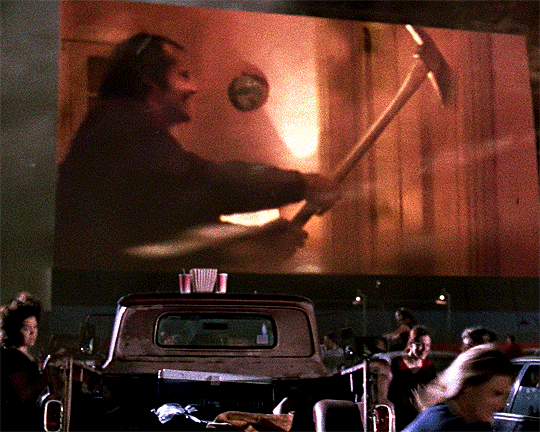

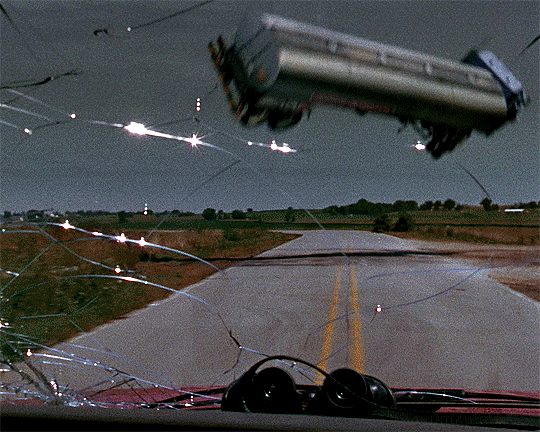
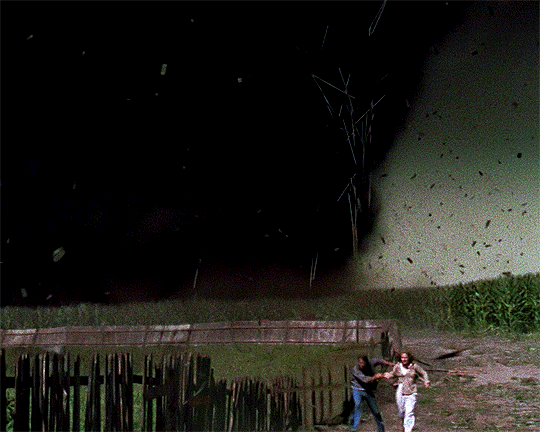
Twister (1996)
#twister#helen hunt#bill paxton#filmgifs#moviegifs#phillip seymour hoffman#jamie gertz#cary elwes#alan ruck#jeremy davies#lois smith#todd field#joey slotnick#sean whalen#wendle josepher
3K notes
·
View notes
Text
youtube
Você sabia? O legado de "Twister" (1996)
#twister#twister movie#jan de bont#bill paxton#tornado#helen hunt#phillip seymour hoffman#90's movies#Jami Gertz#Cary Elwes#Lois Smith#Alan Ruck#special effects#Jeremy Davies#Todd Field#Sean Whalen#Joey Slotnick#Alexa Vega#Wendle Josepher#Jake Busey#Anthony Rapp#Youtube
1 note
·
View note
Text

BEHOLD! The Twister Molecule, Part II. The rest of the crew (and Meg) all connected together in three movies or less.
That’s a big ol’ kick in the face between Nic Cage and Leelee Sobieski there. #HOW’D IT GET BURNED
Oh! That’s Deep Impact between her and Elijah Wood. Whoops.
#movie connections#movies#twister#aunt meg#Scott Thomson#todd field#wendie josepher#joey slotnick#sean whalen#lois smith#the wicker man
1 note
·
View note
Text

President Spencer W. Kimball received a revelation to approve the sealing of an MTF trans woman to her husband in the Washington DC Temple in 1980. The sealing was performed by a Elder Hugh W. Pinnock of the Seventy.
Dr. Gregory Prince wrote about it on the blog By Common Consent (BCC) in Nov 2015.
In January 2016, a blogger wrote about the BCC post. In the comments section, a person identifying as Ann wrote to say that she is the person who was sealed. She provides some detail, including the date of the sealing and the name of the Seventy who performed the marriage.
Unfortunately, I don't know an official Church source for this, so I don't know how much it will matter to your family.
It’s important to understand that Dr. Prince is credible because it’s his eye-witness account that we have about a trans woman being sealed to a man in the temple.
Dr. Gregory Prince has a PhD and his career was in the prevention and treatment of pediatric infectious diseases.
He took the research skills in the medical field, combined it with his interest in history, and wrote several books on religious history and theology:
Having Authority: The Origins and Development of Priesthood During the Ministry of Joseph Smith (1993)
Power from On High: The Development of Mormon Priesthood (1995)
David O. McKay and the Rise of Modern Mormonism (2005)
Leonard Arrington and the Writing of Mormon History (2016)
Gay Rights and the Mormon Church: Intended Actions, Unintended Consequences (2019)
He was also interviewed as part of the 2007 PBS documentary The Mormons
————————————————
This woman was sealed to her husband. So either she's gonna be a woman in the eternities, or if not then this is a same-sex sealing. It's an interesting example of how we could expand our use of the sealing power if we chose to
113 notes
·
View notes
Text
Mr. Beauty and Brains
A chicken shop date
《~/♧\~》

《~/♧\~》
An interview with a famous philosophy professor who gained fame from being one of the youngest in his field and being an attractive one, too. Is an interview for a first date too much?
~~~
Professor!Joseph Descamps x Interviewer!Reader
Warnings: None, just fluff
Yes, this is in direct reference to Amelia Dimoldenberg's Chicken Shop Date.
~~~
~~~
Joseph Descamps was just a normal philosophy professor. He taught at an English university, a bit far from home, but it pays well.
Emphasis on was.
When one of his students posts a video of him with the caption, "When your philosophy teacher is your age," he goes from living a normal life to worldwide news.
Everyone commented on his young age, yes, but they mostly comment on how good-looking he was. Back in France, he wasn't really considered good-looking. More so "mid-looking." He guesses it's him growing out his hair.
So, maybe, just maybe, when you were scrolling through your news feed and found the man in an article called "Young and beautiful: Philosophy professor gains fame," you thought to interview him.
It would benefit you and your fans. Your fans because they seem to be interested in the man, too, and you because your channel can grow. Plus, a date with beauty and brains? Who would turn that down?
So when you got in contact with him, asking for a date-interview, expecting him to say no, he surprisingly agreed.
There you were now in that chicken shop, ready for a date with the hot philosophy professor. What could go wrong?
《~/♧\~》
"I actually watch your videos." Joseph says casually, dipping his fries into some ketchup and nibbling it down. Though he teaches in London, his french accent is very audible.
"Really?" I ask in disbelief. I didn't know professors, especially pretty ones like him, watched videos like mine.
"Yeah. That's why I agreed." He chuckles, taking a sip of his drink. "I saw your text and didn't believe it. I was in the middle of my class, my students were taking an exam, and then suddenly, your name popped up. I literally stood up from my chair in shock. Ask one of thosw kids, they'll tell you."
I laugh at the situation, then act unsurprised. "Oh, yeah, well, I tend to give people that reaction. You know, Jude Bellingham quite literally passed out."
He laughs out loud, whipping his head back. When he regains composure, he asks a question that gets me weak in the knees, and I'm already sitting down.
"Yeah?"
Fuck, he sounded good. It's weird to think he's a teacher.
"Yeah."
"Well, anyone would if it's a date with you." I smile slightly, blush coating my cheeks.
"I know."
《~/♧\~》
"I heard you used to model." He chuckles, bringing a hand to the back of his neck.
"Yeah, I did. Just needed to pay for my own education." He tilts his head, smiling up at me. Why is he so cute?
"That's cool. I mean, you are pretty tall." I shrug, keeping my act up. He smiles at this even more.
"Why do you act like that?" He asks, voice low.
"Like what?" I act dumb, nibbling on my food.
"Like you hate me." I squint, looking to the side.
"Well, what if I do?" I raise my eyebrows in question.
"You don't." He's right. I don't.
"How are you so sure?" I clear my throat, the tension in the air thick.
"I just do." He leans back in his chair. "But that's alright. Turns me on."
"Yeah, I totally hate you." He laughs a breath, and I roll my eyes with a smile.
《~/♧\~》
"What's your type?" I ask, sipping on my drink.
"Um, probably smart girls. I like them smart." He nods, and I nod along.
"Well, not to brag or anything, but I competed in maths all throughout high school." I purse my lips, shrugging. He leans in with endearment.
"Did you really?" He seems so eager. I'm suddenly thankful for all of the late nights I stayed up during my school years.
"Yup. Nothing special." I take a bite of my chicken, and Joseph only stares with wide eyes and a half open mouth.
"That's... That's fucking hot." He leans back, wiping a hand on his face.
"Oh, don't be so dramatic." He chuckles briefly, leaning back in with his arms on the table.
"Oh God, marry me." It was my turn to laugh. When he doesn't laugh with me, my smile drops.
"Are you serious? Why?" I furrow my brows, genuinely confused. This beautiful and smart man in front of me wants to marry me?
"Cause I'm in love with you? I mean, I got a job early in my age, maybe I should get married early, too." He shrugs as if it were simple.
"In your dreams, Mr. Descamps." He licks his lips with a smile, and I almost melt.
"I was hoping for an "I do", but that works, too. I'll dream about you." Why does he have to talk like this. Damn the french.
《~/♧\~》
When I get reminded of the fact there's a camera crew neside us recording every single interaction, I secretly wish they hadn't captured the way his knees touched mine under the table, or how his fingers fiddled with the tips of mind when both our hands were on the table.
We were about to say goodbye, when-
"Can I get your number?" Joseph asks, towering over me with his hands in his pockets. I was gonna say yes a million times, then pull him in to make out with me, but that's a bit too much. Some teasing might work.
"What, you want another interview?" I ask, smiling a bit up at him.
"No. But I won't mind it. I just want you." I blush at this, my legs feeling jelly again, worse now that I'm stood up.
"Sure, whatever, I don't care." He hands me his phone, and I jot the number down, not failing to notice the name,"Mrs. Descamps" placed on the contact already. I don't stop it.
"I'll text, I promise." He purses his lips, looking at me with genuinity. I smile softly, kissing his cheek.
"I know you will." I get up on my tip toes to kiss his cheek.
《~/♧\~》
So, you may or may not be on the top most tweets on the internet, name next to Joseph's on the tag, "#MrDescampsCSD."
After the video was posted, people started shipping you. They gave you the ship name "J-Y/N." You wouldn't say it bothered you, because it doesn't.
And yes, the media caught you kissing his cheek. And yes, they think you're dating. But who's dumb enough to believe that?
"Chérie?" A voice calls out from your flat's corridor, followed by the door closing and keys dropping on the table.
"In here!" I shout from my place on the couch. I feel lips press on my temple.
"Half day today, I told you. I'm making lunch." Joseph Descamps says as he peeks at what you're reading.
"What's J-Y/N?" He squints his eyes at the screen, trying to read a bit more. I pull the phone from his sight, sitting up.
"Nothing you need to worry about, joli. Come here." I stand up, wrapping my arms around his shoulders. Always, after work, no matter what time he gets off, he'll receive a hug and more from me.
He sighs deeply, loosely wrapping his arms around my waist and inhaling my scent.
"I needed this."
"You always do." I kiss his hair, swaying absentmindedly.
Okay, you have to admit, it's pretty cool thinking that you were just interviewing him and now you live in the same place. He was only a professor before he met you. Now he's in love.
《~/♧\~》
This is so cutesy. Also made this bcs of lando. Like ik im late asf but atleast its smth 🤷♀️🤷♀️
#joseph descamps#joseph descamps x reader#mixte1963#fame au#professor#interview#chicken shop date#fluff#social media#fanfic#reader insert
119 notes
·
View notes
Text
THIS DAY IN GAY HISTORY
based on: The White Crane Institute's 'Gay Wisdom', Gay Birthdays, Gay For Today, Famous GLBT, glbt-Gay Encylopedia, Today in Gay History, Wikipedia, and more … January 30

January 30, 1965
Historical Context
Winston Churchill's funeral was on a scale befitting his place in history as the prime minister who guided Britain to victory during World War II. He died on January 24, 1965, having lived to the age of 90. The government had been planning extensively for his funeral in the years before his death, and it had to be revised several times as Churchill kept living, leading Lord Mountbatten to remark that "the pallbearers kept dying and Churchill kept living." It became the largest state funeral in history. Representatives from over 120 countries attended the ceremony in London, including Queen Elizabeth II, for whom Churchill was reportedly her favorite prime minister. The funeral itself was watched by 350 million people on television. After his death on January 24, the Queen sent his wife Clementine Churchill a letter saying "The whole world is the poorer by the loss of his many-sided genius while the survival of this country and the sister nations of the Commonwealth, in the face of the greatest danger that has ever threatened them, will be a perpetual memorial to his leadership, his vision and indomitable courage". Vast numbers of dignitaries attended the funeral, including wartime colleagues Dwight D. Eisenhower and Charles de Gaulle as well as several past British prime ministers.


1859 – Edward Martyn was born on this date. (d.1923); Martyn was the first president of Sinn Féin, the Irish republican movement's political party, which he co-founded with Arthur Griffith, serving from 1904 to 1908. He was homosexual and the son of a wealthy Catholic family from Tillyra Castle in County Galway.
A pillar of the Celtic Renaissance, in 1899 Martyn co-founded, with the poet W.B. Yeats, what became Ireland's famous national theater, The Abbey, the Irish Literary Theatre (1899), which was part of the nationalist revival of interest in Ireland's Gaelic literary history. He was a cousin and friend to George Moore, the Irish novelist, though their relationship was often antagonistic.
Violently opposed to British rule in Ireland, he was the center of a court case in 1905 as the result of an off-the-cuff remark in which he stated that "All Irishmen who join the English army ought to be flogged". He died in 1923, unmarried, and after donating his body to science, was buried at his own request in a pauper's grave.
Martyn was outed by his friend George Moore, a prolific novelist, critic, and polemicist, in his three-volume memoir "Hail and Farewell" (published between 1911 and 1914), which entertained its readers but infuriated his former friend. Moore himself said of these memoirs, "Dublin is now divided into two sets; one half is afraid it will be in the book, and the other is afraid that it won't".
Moore, who was attracted to the handsome young Yeats, later fell in love with the celebrated French painter Edouard Manet, who painted three portraits of him. Moore was influenced by the homosexual Oxford critic Walter Pater, and Moore's 1886 work, A Drama in Muslin, contained references to Lesbianism. Moore's 1887 novel, A Mere Accident, also has a homosexual theme and its central character is again based on Martyn.


1889 – Joseph Fielding Smith (d.1964) was presiding patriarch and a general authority of The Church of Jesus Christ of Latter-day Saints (LDS Church) from 1942 until 1946.
Smith was born in Salt Lake City, Utah, the son of a LDS Church apostle. He went to school at the University of Utah. In 1929, he married Ruth Pingree. Together they had 7 children.
At the age of 43, Smith was ordained a high priest and Patriarch to the Church on 8 October 1942 by Church President Heber J. Grant. He served but four years before it was reported by the church that he had requested to be released from his position. His request was granted by Church President George Albert Smith on 6 October 1946, with the church announcing that Smith was released for reasons of "ill health." After Smith's death it was discovered that the patriarch had been involved in a homosexual affair with a 21-year-old U.S. Navy sailor, who was also a Latter-day Saint.
After being released, Smith took his family to Honolulu, Hawaii, where he continued to raise his family. For a time, Smith was not allowed to hold any position in the church, but reportedly was "treated with compassion." In 1957, Smith was again allowed to serve in the church after he had forsaken his homosexual behavior.


1948 – Mahatma Gandhi was assassinated in New Delhi, India by a Hindu religious extremist. Gandhi had ended British rule in India through nonviolent resistance.
"Non-violence is not a garment to be put on and off at will. Its seat is in the heart, and it must be an inseparable part of our very being," he stated in 1926.
His teachings were used during many of the Gay demonstrations of the 60s and 70s and were a major influence on Martin Luther King, through his gay cohort and fellow organizer, Bayard Rustin, who studied with Gandhi and brought the idea of satyagraha (a synthesis of the Sanskrit words Satya (meaning "truth") and Agraha ("insistence", or "holding firmly to") back to the American civil rights movement Today, the Gay Christian group Soulforce continues the uses Gandhi's non violence practices in its demonstrations against Christian churches that discriminate against GLBT people.


1951 – A California appellate court upholds the oral copulation conviction of a man based on police looking into the window of a restroom.


1961 – The New Mexico House of Representatives votes 37-28 in favor of a revised criminal code that includes a repeal of the state's sodomy law. This is the first vote by a U.S. legislative body to repeal a sodomy law. This bill refers to sodomitical relations as "variant sexual practice," something unique in U.S. history.


1981 – Fernando Grostein Andrade, born in São Paulo, is a Brazilian filmmaker, director, producer, screenwriter, director of photography, and media entrepreneur. He is a columnist for VEJA magazine and the newspaper Folha de S. Paulo.
His best-known work is the documentary Quebrando o Tabu, which discusses alternative policies to the War on Drugs and features former Brazilian president Fernando Henrique Cardoso as well as former US presidents Bill Clinton, Jimmy Carter, infectologist Drauzio Varella and writer Paulo Coelho.
In 2012, in partnership with Sun Dog Pictures, owned by British entrepreneur Richard Branson, the documentary was adapted into an international version which was narrated by actor Morgan Freeman. The project has spun off into the largest online platform in defense for human rights, with over 15 million followers between Facebook and Instagram.
Abe, his most recent movie, was selected to the Sundance Film Festival in 2019, and stars Noah Schnapp and Seu Jorge.
Fernando was also selected a Young Global Leader by the World Economic Forum in 2019. He is a founder of Spray Media, which produces content for cinema as well as YouTube and branded content. Other works include the documentary Wandering Heart, with Caetano Veloso, and a number of publicity campaign for big brands such as Nestlé, Coca-Cola, and Volkswagen.
Fernando is the son of PhD urbanist Marta Dora Grostein and journalist Mario Escobar de Andrade, director of Playboy magazine in Brazil, who died in 1991. He is brother, on his mother's side, of the TV host Luciano Huck. He currently resides in Los Angeles with his husband, actor Fernando Siqueira.


2003 – On this date Belgium became the second country in the world to legally recognize same-sex marriage, with some restrictions. According to the Belgian Official Journal, approximately 300 same-sex couples were married between June 2003 and April 2004 (245 in 2003 and 55 in 2004). This constituted 1.2 percent of the total number of marriages in Belgium during that period. Two thirds of the married couples were gay male couples; the remainder were lesbian couples. On 22 July 2005, the Belgian government announced that a total of 2,442 same-sex marriages had taken place in the country since the extension of marriage rights to same-sex couples two and a half years earlier.


12 notes
·
View notes
Note
book recommendations on mormon history?
oooh worm. very excited. I'm going to focus for now on what I would consider the best introduction books to Mormon history (of the ones I have read).
the number one book I would recommend for people who know little to nothing about Mormon history is American Zion: A New History of Mormonism by Benjamin Park. I think it is an excellent new entry to help fit a much-needed niche of "overview broad-brushstrokes history of Mormonism that is not written from an explicitly faithful perspective." (The author is LDS, but it's definitely written to appeal to secular audiences in a way that the other existing overview books which are mostly church-produced are not.) It goes from Joseph Smith all the way up until Mitt Romney, essentially.
If you want something that goes a little bit deeper and doesn't cover quite as much time, I actually would also recommend Dr. Park's other book, Kingdom of Nauvoo, which covers the period of Mormon settlement in Illinois from 1838-1846, including the advent of polygamy and Joseph Smith's assassination. The Nauvoo era is really interesting and arguably the most crucial period in very early (pre-Utah) Mormonism.
For a narrower focus within the Nauvoo era, American Crucifixion: The Murder of Joseph Smith and the Fate of the Mormon Church is also pretty good and is a very accessible read. Joseph Smith for President: The Prophet, The Assassins, and the Fight for American Religious Freedom covers a lot of the same ground. I would still recommend these books for Mormon history "beginners" because Joseph Smith's life and death is so pivotal.
In terms of reading more about Joseph Smith, I would recommend Fawn Brodie's biography No Man Knows My History, with some caveats. I think this is a beautifully written book and a lot of the scholarship does hold up, but a) it was written in the 1940s b) it was written by someone who was in the process of leaving Mormonism and definitely takes the position pretty stridently that He Made It All Up and it's controversial within Mormon history as a field because of that. There have been other biographies of JS written since Brodie: Dan Vogel's is good but extremely dense, and Richard Bushman's I have not read so I don't feel like I can recommend it. (Side note: I think it is very difficult to write biography about Joseph Smith because the question of whether or not the author believes he was a prophet and the subsequent question of whether or not the author believes he believed he was a prophet is really omnipresent. I don't think you can really evaluate his life and work without also evaluating the truth claims of Mormonism as a religion in a way that is not quite as true for subsequent church leaders.)
Speaking of subsequent church leaders, I would really strongly recommend Brigham Young: Pioneer Prophet by my former professor John Turner, who is really getting gassed up on this blog today, lol. Great bio of the man who shaped Mormonism more than anyone except Joseph Smith (and, arguably, just as much as Joseph Smith.) I actually think this would work fantastically as an overview too because Brigham Young joined the church very early so you basically get a front row seat from origins well into the Utah period.
I wish I had more intro recs about the Utah period or about Mormon women's history/polygamy, but a lot of what I've read on that is either really niche in focus or really dense, so I'm not sure it is a great place to start. That being said, if you want a female perspective on early Mormonism, you should read Mormon Enigma: Emma Hale Smith which is a biography of Joseph Smith's legal wife. It's a great book and was a really ground-breaking classic in Mormon history that imo totally changed the mainstream LDS narrative about Emma.
14 notes
·
View notes
Text
The Relevance of Joseph Fielding Smith's Teachings Today| On Family and Liberalization of Abortion
The inaugural issue of the January 1971 edition of the Ensign provides a message from the then First Presidency of the Church of Jesus Christ of Latter-day Saints. Namely, Joseph Fielding Smith, Harold B. Lee as the first counselor, and N. Eldon Tanner as the second counselor. Given the present social climate today – my reflection turns toward the teachings of our past leaders. Granted, when…
#Addressing societal norms with Gospel principles#Challenges to family unity#Combating societal trends affecting families#Cultural impact on family integrity#Eternal purpose of the family#Faith and family restoration#Faith-based approaches to family preservation#Importance of family in the Gospel#Joseph Fielding Smith family teachings#LDS Christian living and apologetics insights#LDS perspective on family disintegration#LDS teachings on sanctity of life#Liberalization of abortion and faith values#Protecting family values in society#Social impact on families today
0 notes
Text
#IFTTT#WordPress#Quote#Thought#book of mormon#Brad Wilcox#Dieter F Uchtdorf#folk magic#History of the Church#Joseph Fielding Smith#Joseph Smith#Joseph Smith History#Russell M Nelson#seer stones
1 note
·
View note
Text
LDS Church History for Beginners
Somebody mentioned they wanted to get around to digging more into Church history. I could give a topical list, but I think the better way to do this is to give a list of people whose lives and words will illuminate how/why/when the Church became what it is today.
Emma Smith: her experience with polygamy, the suspension of the Relief Society, and her conflict with Brigham Young after the death of Joseph Smith.
Brigham Young: the experiences of his wives, his racial biases and support for slavery and segregation, and the conflicts with indigenous people that occurred under his leadership.
Emmeline B. Wells: her writings defending polygamy, women's empowerment, and her advocacy of women's suffrage.
The excommunications of apostle Richard Lyman (for adultery) and patriarch to the Church Joseph Fielding Smith (for homosexuality.) Also note that there were multiple Joseph Fielding Smiths. The prophet was a different one.
J. Reuben Clark: his authorship of segregationist, homosexualist, and anti-feminist thought in the modern Church, post-WWII.
Spencer W. Kimball: his impact on the Church's role in defeating the ERA. Also the Indian Placement Program, and the mechanics of how the racial restriction was enforced.
Ezra Taft Benson: his relationship with and advocacy for the John Birch Society, the Red Scare, and his open animosity towards Hugh B. Brown.
The September Six: their advocacy, excommunications, and the works of D. Michael Quinn.
Chieko Okazaki: her life and faith and her criticism of the Family Proclamation.
Also, a piece of advice: when trying to see/understand any aspect of Church history, with all of the tragedy that can entail, I find it helpful to connect with the voices and perspectives of LDS women.
"How do I keep my faith alive when *this* is what our people are like?" is a question LDS women have been answering since 1830. They don't just fall in line behind every ridiculous thing a person in authority says, does, or wants to do. They never have, which is part of why those in leadership weren't interested in telling the stories of LDS women for so long. No study of Church history is accurate or complete if it doesn't include the perspectives of women.
128 notes
·
View notes
Text
La liste des stars de la musique, du cinéma et de la télévision qui ont soutenu Kamala : Oprah Winfrey, Taylor Swift, Jon Bon Jovi, Tyler Perry, Bruce Springsteen, Arnold Schwarzenegger, Beyoncee, George Clooney, Robert De Niro, Barbra Streisand, David Letterman, Jennifer Lopez, Samuel L. Jackson, Spike Lee, Julia Roberts, Leonardo DiCaprio, Kerry Washington, Tessa Thompson, Bryan Tyree Henry, Scarlet Johanson, Robert Downey, Jr., Don Cheadle, Mark Ruffalo, Paul Bettany, Chris Evans, Dania Guria, Ben Stiller, Andy Cohen, Harrison Ford, Jack Black, Billie Eilish, Anne Hathaway, Whoopi Goldberg, Billy Porter, Jennifer Lawrence, Eminem, Jason Bateman, Julia Louis Dreyfus, Bryan Cranston, Jennifer Garner, Jessica Alba, Patton Oswalt, Emmy Rossum, Glenn Close, Kumail Nanjiani, Jason Alexander, Kevin Smith, Steven Colbert, Larry David, Morgan Freeman, Cher, Nick Offerman, Michael Keaton, Jeff Bridges, Josh Bag, Sean Aston, Bradley Whitford, Joseph Gordon-Levitt, Michael Kelly, Paul Schreer, Misha Collins, Mark Hamill, Lance Bass, Josh Groban, Matt Damon, Lin-Manuel Miranda, Will Ferrel, Billy Eichner, Alicia Keys, Usher, Dave Bautista, Jimmy Kimmel, membrii formației Mumford & Sons, John Legend, Pink, Maren Morris, Keenan Thompson, Lil John, Eva Longoria, Mindy Kaling, Tony Goldwyn, D.L. Hughley, Lizzo, Martin Sheen, Sigourney Weaver, George Lopez, Howard Stern, Cardi B, Megan Thee Stallion, Marc Anthony, Sam Elliot, Keegan Michael Key, John Stamos, Ed Helms, Ken Jeong, Jon Hamm, Cecily Strong, Tiffany Haddish, Ike Barinholtz, Rosie O' Donnel, Kathy Griffin, Stevie Wonder, Smokey Robinson, Anthony Anderson, Sally Field, Rob Reiner, Jamie Lee Curtis, Julianne Moore, Cynthia Nixon, George Takei, Mia Farrow, Alyssa Milano, Sandra Bernhard, John Cleese, Michael Ian Black, Piper Perabo, Stephen King, Michael Moore, Jane Fonda, Bette Midler, Marisa Hargitay, Sheryl Lee Ralph, GloRilla, Padma Lashmi, Matthew Modine, Aubrey Plaza, Fat Joe, Christina Aquilera, Dick Van Dyke, Katy Perry, Lady Gaga, LeBron James, Jennifer Aniston, Bad Bunny, Ariana Grande, Ricky Martin, Chappel Roan, Martha Stewart, Steph Curry, Sara Bareilles, Olivia Rodrigo, Tina Knowles, Shonda Rhimes.
📍Les journaux nationaux et les chaînes de télévision qui ont soutenu Kamala : CBS, NBC, MSNBC, abc, CNN, New York Times, The Economist, The New Yorker, Houston Chronicle, The Boston Globe, The Seattle Times, Las Vegas Sun, The Philadephia Inquirer, Rolling Stone, Daily Herald, Times Union, Newsday, Lincoln Journal Star, Vogue, The Republican, The Sun Chronicle, The Atlantic, The Guardian, The Observer et d’autres plus petites.

7 notes
·
View notes
Text
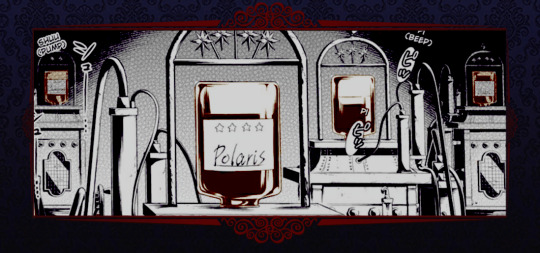
Black Butler deals with the topic of blood transfusion in the arc(s) centered around O!Ciel's twin brother and Undertaker's experiments in reviving the dead.
While the story is fictional, Yana Toboso does manage to introduce a few concepts about blood transfusion that are historically true to how it was handled in the Late Victorian period that the series is set in. However, like any fictional piece it also features multiple unrealistic episodes which simply would not have taken place in the Victorian era in the way that it did in the series.

Blood transfusions were still a novelty in the medical field: the procedure dates back as recently as the 17th century. William Harvey conducted experiments on blood and concluded that it circulates indefinitely (Du Motu Cordis, 1628). The matter of circulation in the manga was brought up by Othello, and it is in fact interesting that for Victorians it was still a fairly recent discovery.

The first blood transfusions were not used to assist people suffering blood loss - instead, they had to deal with attempting to cure damage received by the body after giving birth. Most early transfusions happened to try and resolve the issue of postpartum hemorrhage in women. Despite women being largely in the focus, men were mostly seen as proper donors: Anne Marie Moulin writes that in nineteenth-century transfusion, women were rarely donors, as their blood was held to be less plentiful and vital.

What we do not witness in Black Butler is the widespread usage of interspecies blood transfusion: delivery of blood to humans from lambs, cows, calves, dogs, and such. Jean-Baptiste Denis was a pioneer of the procedure and conducted his first lamb-to-human transfusion in 1667. However, we are familiarized with the thought expressed by two characters, Sieglinde and Othello: the history of blood transfusion is a complicated one, and for a good reason.

After being banned for nearly two centuries since its birth in France, blood transfusion revitalized in the 19th century in England with the work of James Blundell who concluded that animal transfusion did not prove to be effective and first worked with a human subject. Some of his experiments were successful, some not, though he persisted.
Interestingly, Blundell was an avid believer in the nourishing, nearly life-giving qualities of blood transfusion. He spoke of it as if introduction of new blood into the body literally had the ability to bring back the dead: a sentiment perhaps reflected in Undertaker's experiments to revive R!Ciel.

His experiments went far enough to lead to the invention of an "impellor", a tool that is a mix of a pump and a funnel used for direct blood transfusion. He also invented a "gravitator", a chair with an additional tool to collect blood before it's delivered to the patient. Similar tools can be seen being used on the victims kidnapped to supply R!Ciel, and on himself.
R!Ciel seems to remain in elevation for his transfusions, which is something that was believed to be helpful as gravitational flow dragged blood into the vein. The tool that Undertaker is using clearly has a pump, which is also true to how transfusions were done. It should be additionally noted that nasal cannula R!Ciel is wearing in later chapters would not be invented until 1949.

Further inventions and discoveries in the field were made: Thomas Smith used defibrilated blood for transfusions and M.B. Higginson invented a special syringe that was, however, later used for other purposes. A new leap in transfusion methods was attempted by T. G. Thomas who, knowing of blood's tendency to coagulate, argued that it's best to use milk - a practice that had its roots in Canada and the US. The dangers of blood transfusion due to contamination began to be spoken about only around the second half of the century when Joseph Lister invented (1867) antiseptics.
Interestingly, the phenomenon of blood coagulation is slightly touched upon in the manga: Siegliende marks that mixing two types of blood together leads to the mixture thickening.

In the very end of the century, medicine saw invention of a saline mixture, which is employed as 0,9% Normal Saline in blood transfusions even nowadays. William Brooke O'Shaughnessy and Thomas A. Latta experimented on both dogs and humans with a saline mixture, remarking that it revitalized their patients well.
The Medical Journal Records of 1883 speak of use of saline in treating cholera patients during the epidemics; multiple cases of use are also marked in the British Medical Journal. These interesting details did not make it to the manga as of now, though it does additionally emphasize how unlikely blood transfusions were by the end of the century and how greatly the practice went into decay. This does, however, explain the secrecy with which Undertaker acts.

Lastly, Siegliende and Othello both note that not knowing of blood types was indeed a great obstacle in the medical field at the time. The history of transfusions is full of unfortunate cases and failed experiments with many victims: ensuring blood transfusion's success was impossible until 1901 when blood types were first discovered by Karl Lendsteiner.

#༺♚༻ 𝕬nima e 𝕮uore ༺♞༻#༺☤༻ 𝕸𝔢𝔡𝔦𝔠𝔦𝔫𝔞 ༺☤༻#kuroshitsuji#black butler#historyblr#victorian era#victorian history#medical history#sieglinde sullivan#othello black butler
67 notes
·
View notes
Text






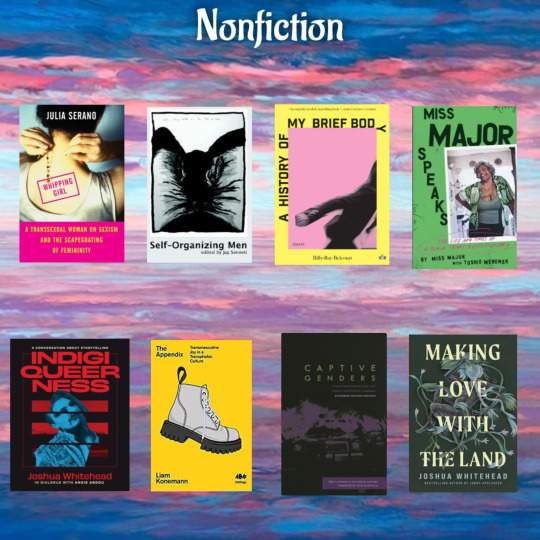


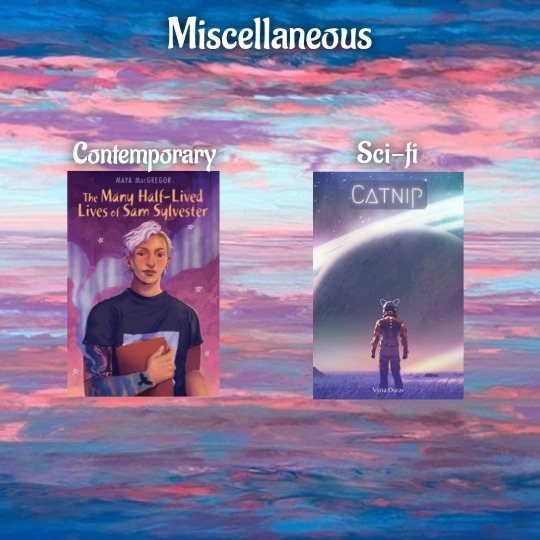
Another crosspost from my Instagram! This time for the Trans Day of Visibility!
Full titles under the cut
Poetry
Bluff by Danez Smith
Even This Page is White by Vivek Shraya
[Insert Boy] by Danez Smith
Maiden, Mother, Crone: Fantastical Trans Femmes ed by Gwen Benaway
Giving Birth to Yourself: Poems for Combat by Kai Cheng Thom
Falling Back in Love with Being Human: Letters to Lost Souls by Kai Cheng Thom
Fantasy
Lead Me Astray by Sondi Warner
She Who Became the Sun by Shelley Parker-Chan
Out of the Blue by Jason June
Celestial Monsters by Aiden Thomas
Historical
Self-Made Boys: A Great Gatsby Remix by AM McLemore
Most Ardently: A Pride and Prejudice Remix by Gabe Cole Novoa
The Companion by EE Ottoman
The Spirit Bares Its Teeth by Andrew Joseph White
Horror
Manhunt by Gretchen Felker-Martin
Hell Followed With Us by Andrew Joseph White
Romance
I Think of You Often by Sienna Eggler
Their Troublesome Crush by Xan West
Drag Me Up by RM Virtues
Nonfiction
Whipping Girl: A Transsexual Woman on Sexism and the Scapegoating of Femininity by Julia Serano
Self Organizing Men: Conscious Masculinities in Time and Space by Eli Clare and Jay Sennet
A History of My Brief Body by Billy-Ray Belcourt
Miss Major Speaks: The Life and Times of a Black Trans Revolution by Miss Major Griffin-Gracy and Toshio Meronek
Indigiqueerness: A Conversation About Storytelling by Joshua Whitehead and Angie Abdou
The Appendix by Liam Konemann
Captive Gender: Trans Embodiment and the Prison Industrial Complex by Nat Smith, Eric A Stanley, and CeCe McDonald
Making Love With the Land by Joshua Whitehead
Graphic novels
Cheer Up: Love and Pompoms by Crystal Frasier
Across a Field of Starlight by Blue Delliquanti
Lumberjanes: Up All Night by ND Stevenson, Grace Ellis, and Shannon Watters
Trans authors but (to my knowledge) no trans characters
Sorrowland by Rivers Solomon
All the Dead Things by Bear Lee
Bitter by Akwaeke Emezi
Miscellaneous
The Many Half-Lived Lives of Sam Sylvester by Maya MacGregor
Catnip by Vyria Durav
23 notes
·
View notes